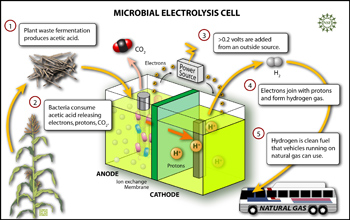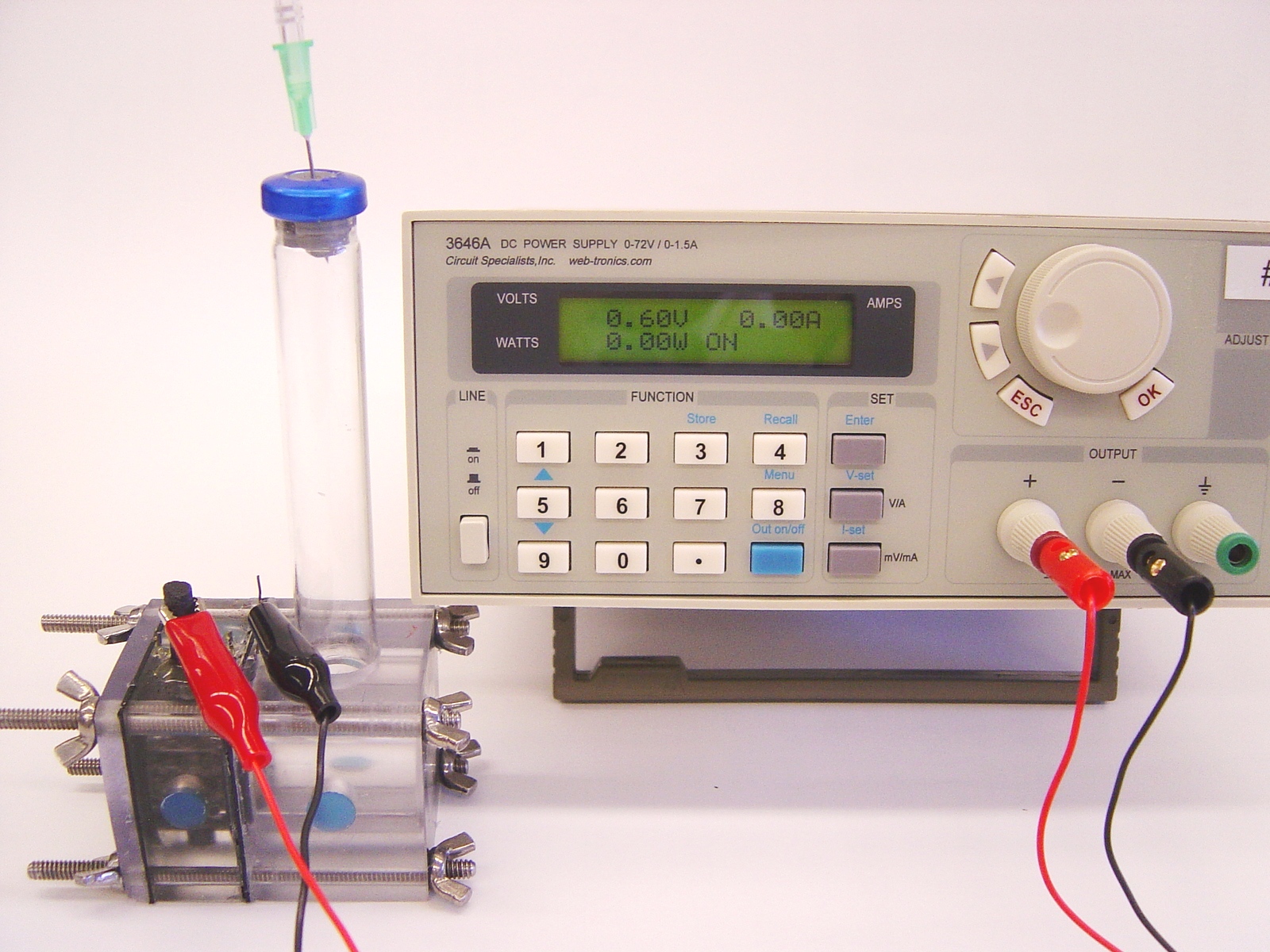All Images
News Release 07-168
Microbes Churn Out Hydrogen at Record Rate
In new table-top reactor, bacteria from wastewater produce abundant, clean hydrogen from cellulose, or even vinegar, and a little electricity
This material is available primarily for archival purposes. Telephone numbers or other contact information may be out of date; please see current contact information at media contacts.

Researchers have designed a microbial electrolysis cell in which bacteria break up acetic acid (a product of plant waste fermentation) to produce hydrogen gas with a very small electric input from an outside source. Hydrogen can then be used for fuel cells or as a fuel additive in vehicles that now run on natural gas.
Credit: Zina Deretsky, National Science Foundation
Download the high-resolution JPG version of the image. (511 KB)
Use your mouse to right-click (Mac users may need to Ctrl-click) the link above and choose the option that will save the file or target to your computer.

A microbial electrolysis cell (MEC) shown with the power source used to augment the voltage produced by the bacteria. Bacteria grow in the anode chamber, forming a biofilm on graphite granules, while hydrogen gas is released at the cathode and bubbles up and into the tube on top of the reactor.
Credit: Photograph by Shaoan Cheng, Penn State University
Download the high-resolution JPG version of the image. (720 KB)
Use your mouse to right-click (Mac users may need to Ctrl-click) the link above and choose the option that will save the file or target to your computer.


